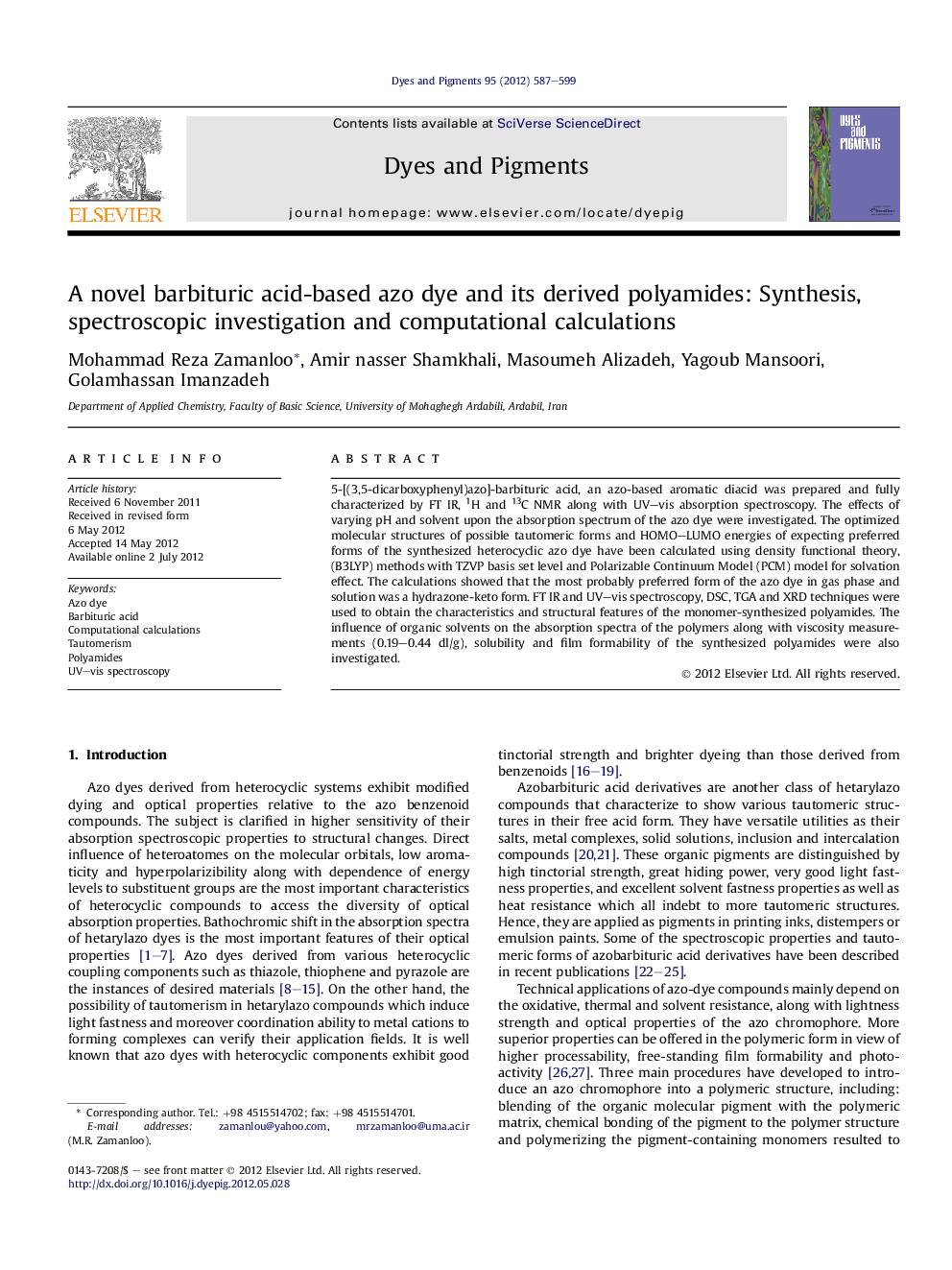| Article ID | Journal | Published Year | Pages | File Type |
|---|---|---|---|---|
| 176840 | Dyes and Pigments | 2012 | 13 Pages |
5-[(3,5-dicarboxyphenyl)azo]-barbituric acid, an azo-based aromatic diacid was prepared and fully characterized by FT IR, 1H and 13C NMR along with UV–vis absorption spectroscopy. The effects of varying pH and solvent upon the absorption spectrum of the azo dye were investigated. The optimized molecular structures of possible tautomeric forms and HOMO–LUMO energies of expecting preferred forms of the synthesized heterocyclic azo dye have been calculated using density functional theory, (B3LYP) methods with TZVP basis set level and Polarizable Continuum Model (PCM) model for solvation effect. The calculations showed that the most probably preferred form of the azo dye in gas phase and solution was a hydrazone-keto form. FT IR and UV–vis spectroscopy, DSC, TGA and XRD techniques were used to obtain the characteristics and structural features of the monomer-synthesized polyamides. The influence of organic solvents on the absorption spectra of the polymers along with viscosity measurements (0.19–0.44 dl/g), solubility and film formability of the synthesized polyamides were also investigated.
Graphical abstractFigure optionsDownload full-size imageDownload as PowerPoint slideHighlights► Synthesis, characterization and spectroscopic properties of a barbituric acid-based azo dye. ► The optimized molecular structures of seven possible tautomeric forms of the azo dye were evaluated. ► The polycondensation of the monomer with aromatic diamines offered thermally stable and film formable polymers. ► The polyamides showed comparable UV–vis absorption pattern to the monomer.
